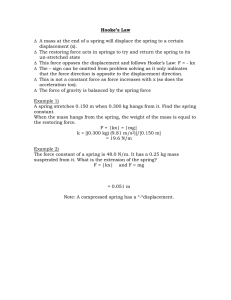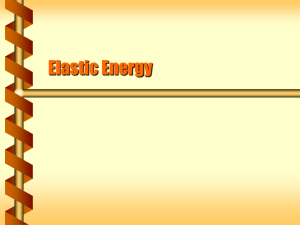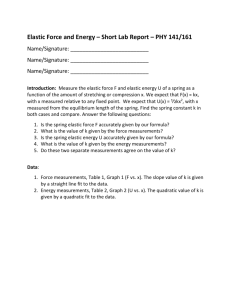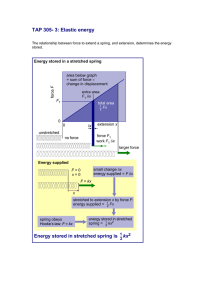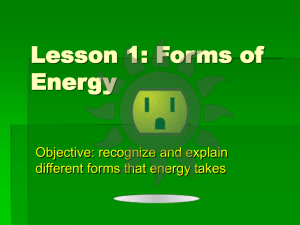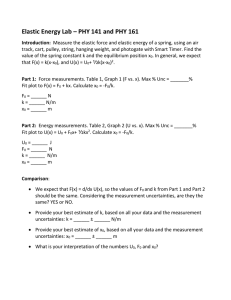Elastic Potential Energy
advertisement
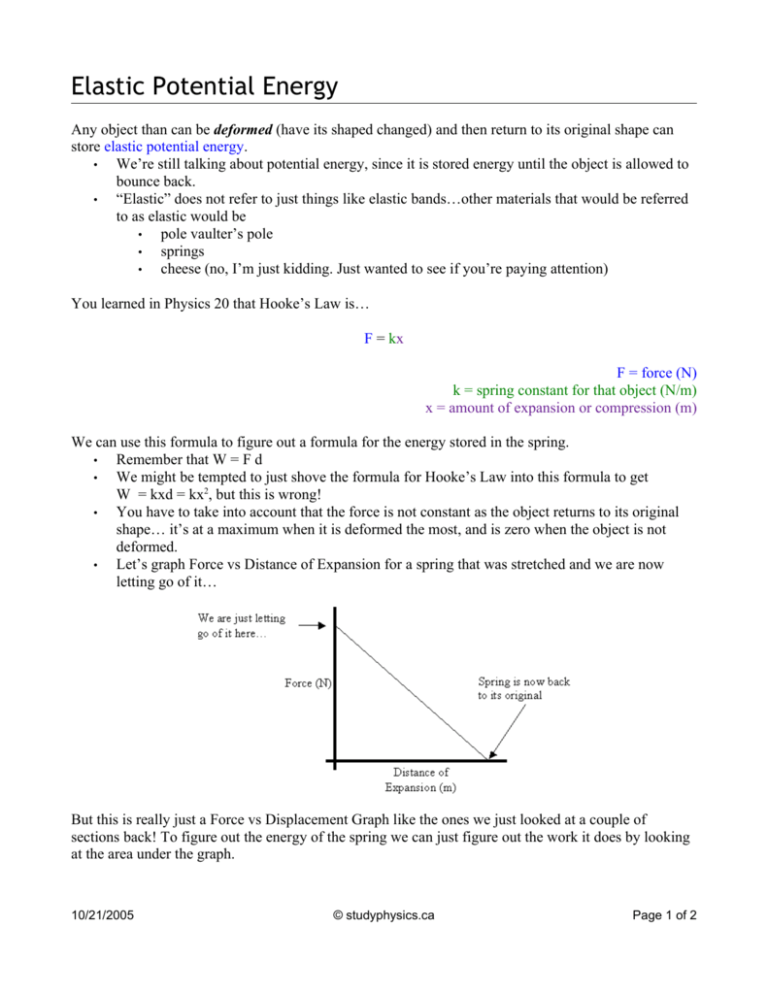
Elastic Potential Energy Any object than can be deformed (have its shaped changed) and then return to its original shape can store elastic potential energy. • We’re still talking about potential energy, since it is stored energy until the object is allowed to bounce back. • “Elastic” does not refer to just things like elastic bands…other materials that would be referred to as elastic would be • pole vaulter’s pole • springs • cheese (no, I’m just kidding. Just wanted to see if you’re paying attention) You learned in Physics 20 that Hooke’s Law is… F = kx F = force (N) k = spring constant for that object (N/m) x = amount of expansion or compression (m) We can use this formula to figure out a formula for the energy stored in the spring. • Remember that W = F d • We might be tempted to just shove the formula for Hooke’s Law into this formula to get W = kxd = kx2, but this is wrong! • You have to take into account that the force is not constant as the object returns to its original shape… it’s at a maximum when it is deformed the most, and is zero when the object is not deformed. • Let’s graph Force vs Distance of Expansion for a spring that was stretched and we are now letting go of it… But this is really just a Force vs Displacement Graph like the ones we just looked at a couple of sections back! To figure out the energy of the spring we can just figure out the work it does by looking at the area under the graph. 10/21/2005 © studyphysics.ca Page 1 of 2 Area = ½ bh =½Fx = ½ (kx) x Area = ½ kx2 = W So the work done by the spring (and then energy it stored) can be calculated using… Ee = ½ kx2 Ee = eleastic potential energy (J) k = spring constant (N/m) x = amount of expansion or compression [deformation] (m) Expansions are + Compressions are Example 1: Determine how much energy a spring with a spring constant of 15 N/m stores if it is stretched by 1.6m. Ee = ½ kx2 = ½ (15N/m) (1.6 m)2 Ee = 19 J 10/21/2005 © studyphysics.ca Page 2 of 2
